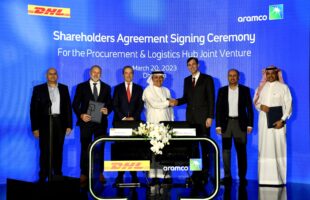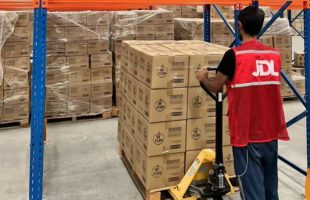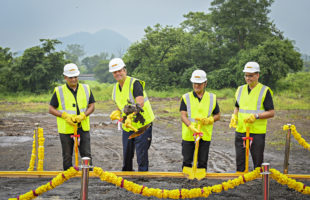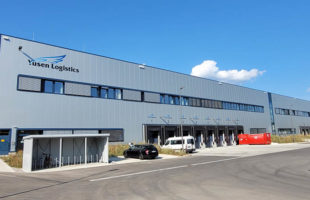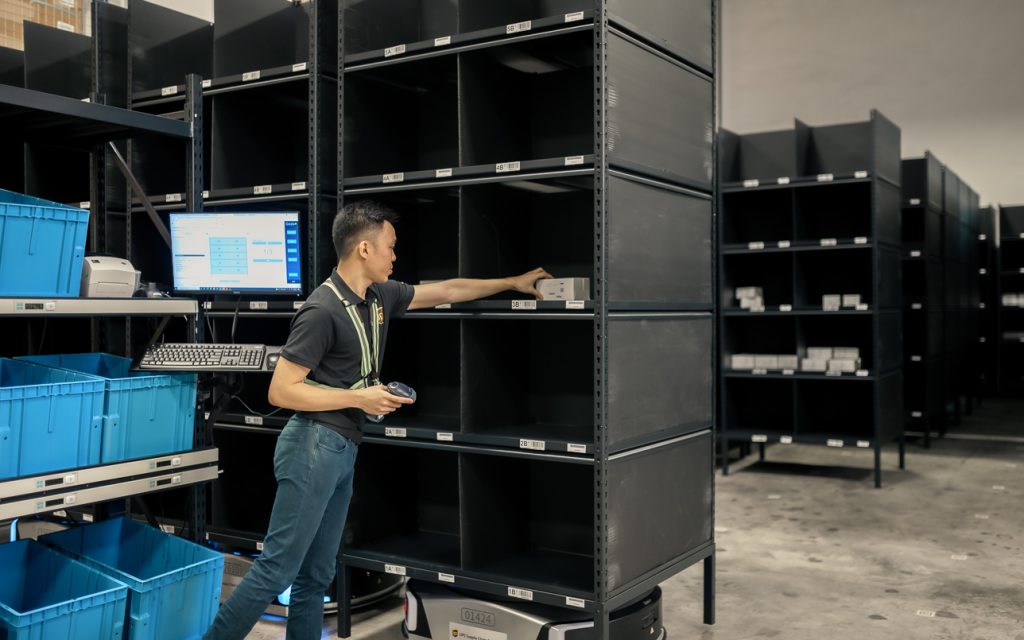
Small and medium businesses make up the bulk (around 97 percent) of businesses in Asia Pacific, and more logistics players are enhancing their services to tap this ever-growing market. The added effect of e-commerce and at-home consumption is driving growth for most of these enterprises and prompting the need to expand. In our latest issue, Payload Asia got a chance to talk to Sebastian Chan, president of UPS Supply Chain Solutions, on how the company is gearing up with digitalization and testbed technologies to support the needs of supply chains and enterprises at the new innovation centre in Singapore.
For UPS supply chain solutions, what would be your core business? Which industries do you serve particularly in Asia Pacific, and how important are small businesses for your business?
In Asia Pacific, UPS Supply Chain Solutions provides a suite of end-to-end solutions designed to scale with growing businesses and help them grow even faster. Our business units include Freight Forwarding (Air, Ocean, Road and Rail) and Contract Logistics covering all industry segments.
Besides serving some of our large enterprise customers, SMBs are a key focus for us. Across Asia, they represent at least 97% of all businesses and contribute to more than half of the region’s economy. UPS’s role is to create supply chain solutions for SMBs so they don’t get left behind. We do this by leveraging advanced technology to help small businesses thrive in today’s increasingly complex supply chain environment.
Can you describe to us how the innovation centre works? What goes on in the process of procuring, testing and then launching a new technology to the market?
Businesses in Asia are increasing investments in warehouse automation technologies to enhance productivity and competitiveness. The UPS SCS Asia Pacific Innovation Centre is our dedicated platform to help these businesses accelerate their digitalization journey in a transforming world, through collaborations with our strategic partners to incubate, test, and deploy next-generation technology.
We’re already collaborating with customers and leading technology partners to converge innovations such as autonomous mobile robots (AMR), radio-frequency identification (RFID), and drones, to future-proof our customers’ supply chains. The compatibility and modular nature of certain AMR and RFID technologies means businesses collaborating with us can explore countless ways to automate and optimize their supply chains according to their unique needs.
That said, technology is constantly evolving and what we have at the Asia Pacific Innovation Centre today may look different from what we have in a few months’ time. We are constantly on the lookout for emerging and innovative technologies that our customers can benefit from, and will continue to engage academia to evaluate proofs-of-concept to eventually bring these ideas to life across the global supply chain.
Why are more shippers and logistics players investing in digitalisation and customer experience, particularly in last mile and returns?
The pandemic aside, digitalization is key to success in modern-day logistics. Our freight forwarding and contract logistics customers want to go beyond basic visibility of their global supply chain. The supply chain challenges we’re witnessing today solidifies the need for businesses to have access to advanced data analytics that allow them to forecast and plan ahead for greater supply chain predictability.
When it comes to express package deliveries, the last mile experience in particular has seen rapid change in recent years, from wider availability of lockers for end consumer pick-up and drop-off, to near real-time tracking visibility, and greater flexibility for people to choose where and when they wish to receive their shipments. Our extensive alternate delivery locations and locker networks across US and Europe, and UPS My Choice for Business solution allows SMBs to seamlessly address these pain points simply by choosing to ship with us.
All these enhancements result in greater convenience not just for the end consumer, but also lowers cost for logistics providers who can better consolidate shipment volume at selected hubs, as well as reduce the frequency of send-against due to missed deliveries.
What are the new technologies that can help shippers and logistics players keep up with the demand in e-commerce and manage seasonal peaks?
Logistics is the glue that brings shippers, technologies, and supply chains together. By connecting our customers with the latest digital technologies through our Asia Pacific Innovation Centre, we can help customers keep up with ever-changing consumer needs and manage supply chain complexity, particularly during peak season.
What this means at a very high level is that by deploying warehouse automation technologies, our customers can save, say, 30% of costs and 50% of warehouse space, which in turn allows them to stock more in their regional warehouse distribution centres at lower cost per unit.
Going digital also allows shippers to unlock greater agility and end-to-end visibility of their supply chains. UPS’s proprietary software like the UPS Supply Chain Symphony™ portal are compatible with the latest technologies at the Asia Pacific Innovation Centre, resulting in a truly digital experience for customers. This means our customers have the latest warehouse technologies, coupled with full supply chain visibility at their fingertips on a single mobile app or dashboard, across hundreds of warehouses, various modes of transportation, and all the data that allows for advanced analytics and greater supply chain predictability.
All this creates a win-win situation where both our customers, and their customers, are happy.
As a major transit hub for cargo, what have you observed in the Singapore market over the last 20 months? How have client requirements and expectations changed, and how has UPS responded?
Singapore will continue to play an important role as a regional and international cargo hub. Taking air cargo as an example, the adoption of the vaccinated travel lanes program by the Singapore government will improve belly cargo capacity which is in severe shortage. That said, this resumption of belly capacity is not a given and we need to factor in a degree of uncertainty, depending on how the pandemic continues to evolve.
We’ve noticed shifts in consumer behaviors like rise in e-commerce and at-home consumption accelerated by the pandemic. In fact, UPS’s global B2C delivery volumes soared by over 75% as consumers quickly moved online for almost everything.
Apart from the Asia Pacific Innovation Centre, we’ve been supporting customers digitally in other ways to make sure they remain compliant with, and can take advantage of, new trade policies and customs regulations. We’ve managed to distill all that down into a free online shipping tool which we call International Knowledgebase, an API that seamlessly integrates with merchants’ e-commerce platforms to help them simplify customs requirements, as well as calculate total landed cost so consumers know exactly how much they’ll need to pay, inclusive of any customs duties and taxes, prior to checkout. This results in greater certainty for shippers, fewer customs delays and penalties, and a more positive experience for end consumers.



